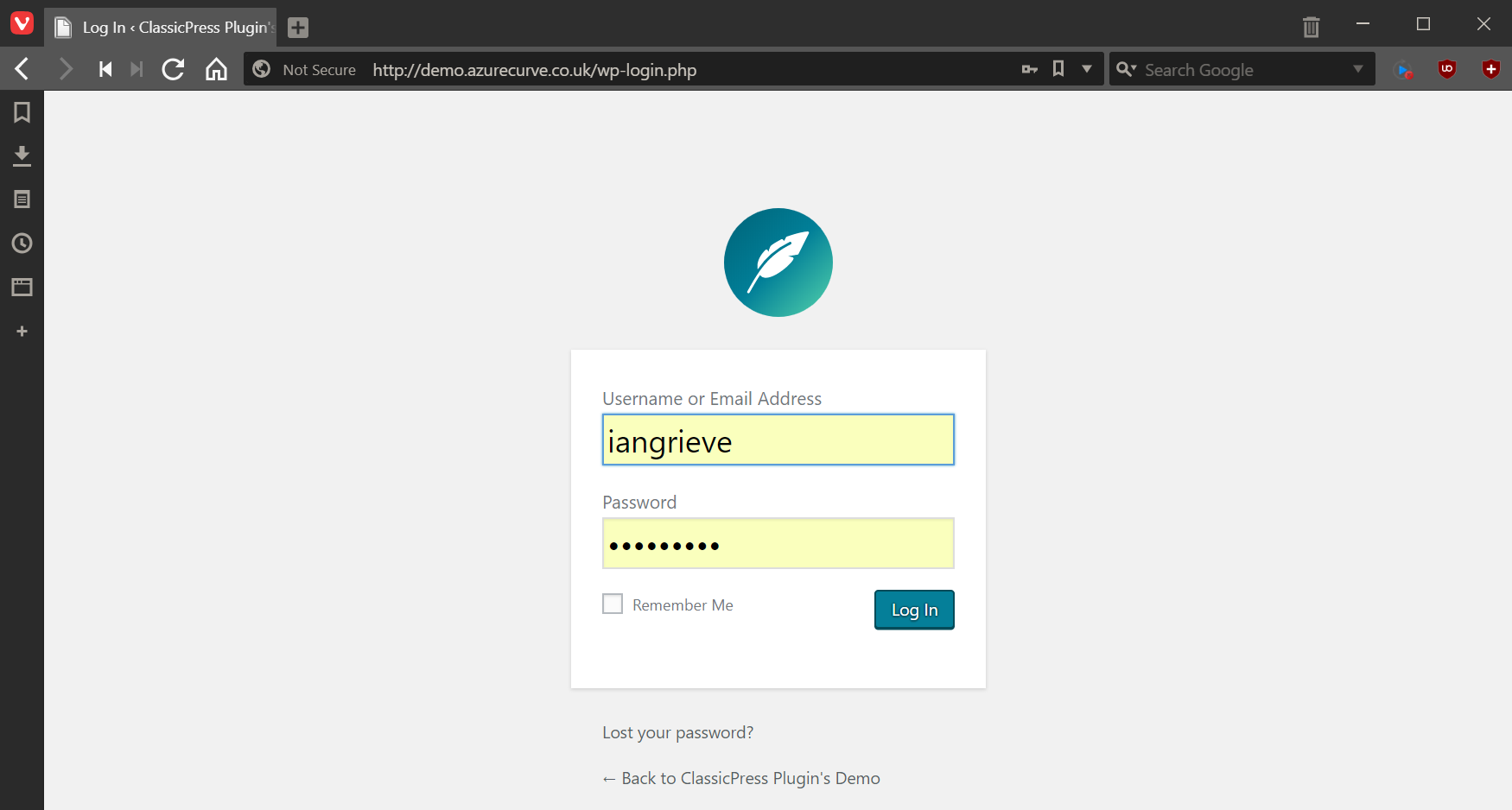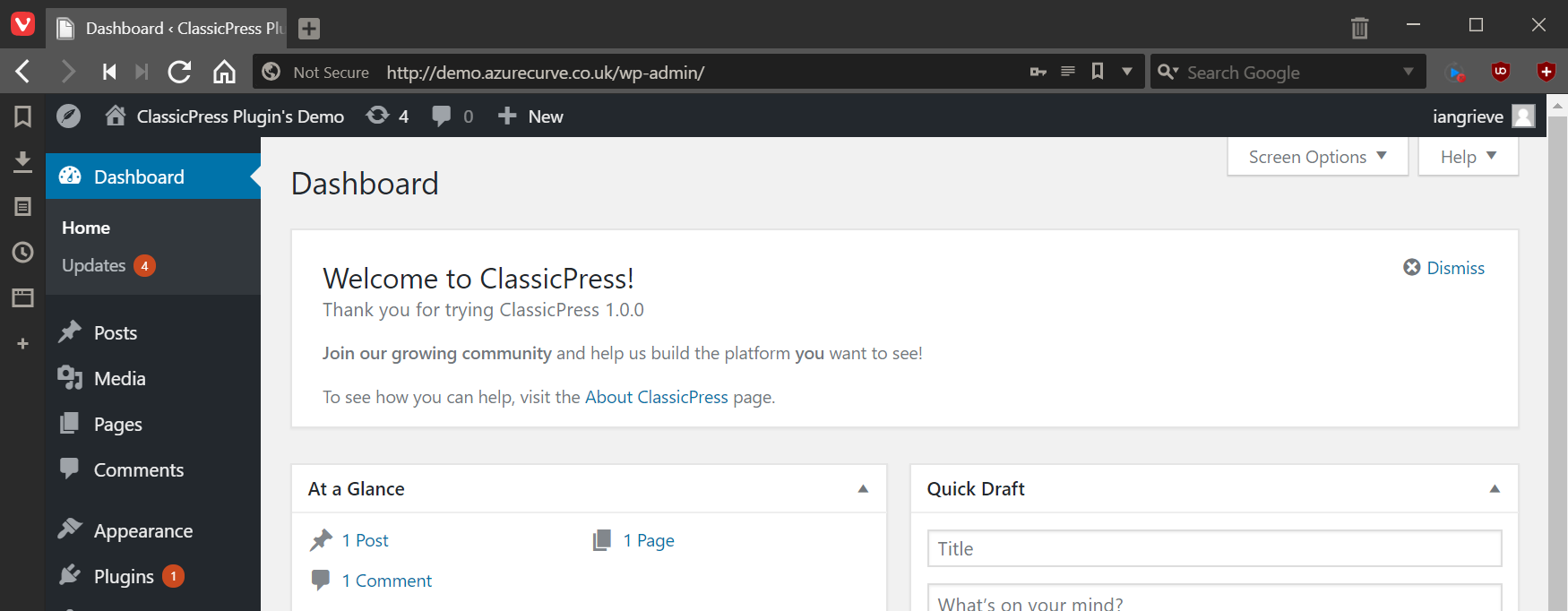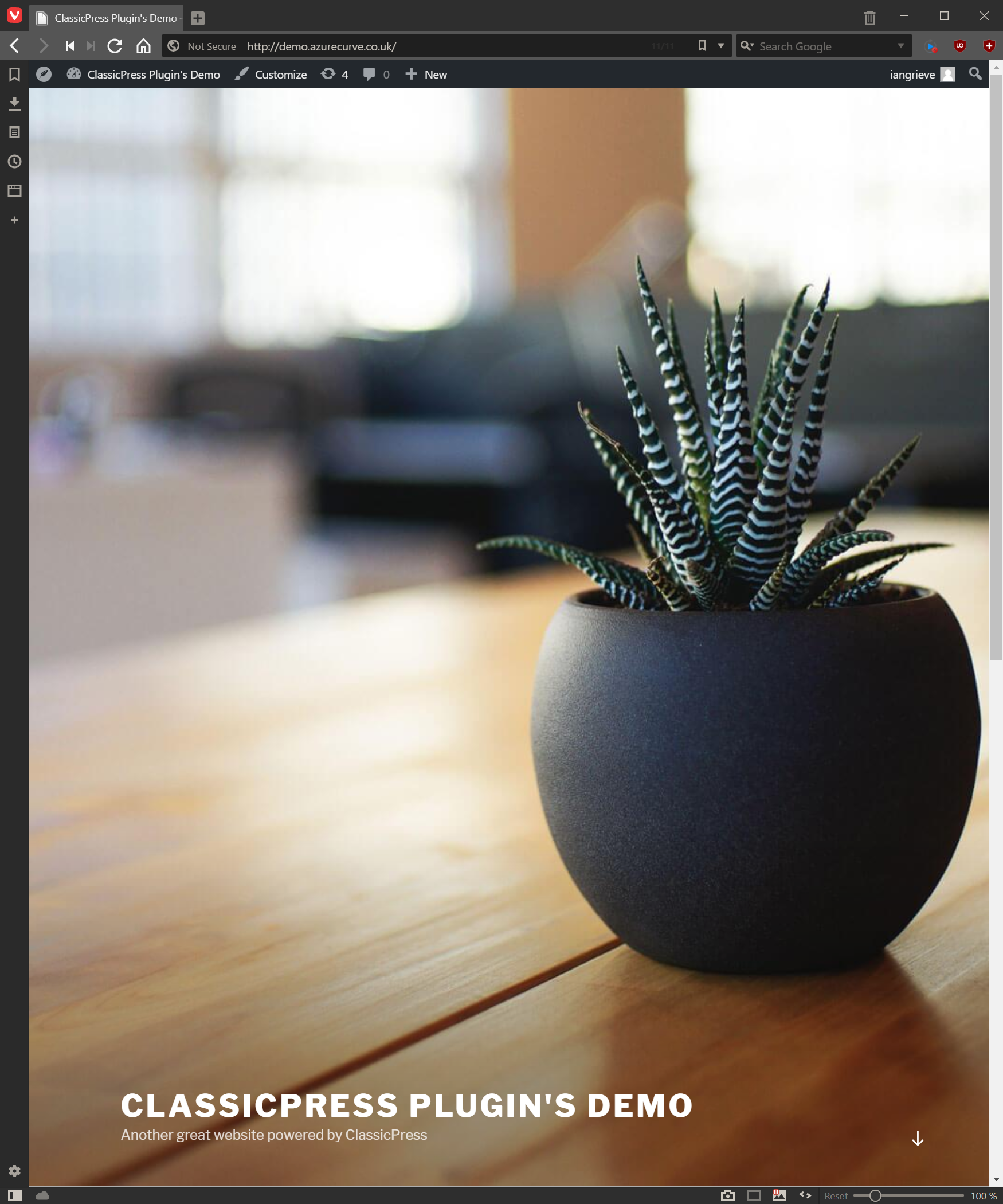 This post is part of the series on Installing ClassicPress; ClassicPress is an open source fork of WordPress which aims to target the business market or those looking for a CMS with a focus on security, stability and flexibility.
This post is part of the series on Installing ClassicPress; ClassicPress is an open source fork of WordPress which aims to target the business market or those looking for a CMS with a focus on security, stability and flexibility.
With ClassicPress installed, the next step in the installation is to test that the site works.
If you navigate to your web address followed by /wp-login.php you can enter the admin credentials created during the installation:
Once you’ve logged in you will see the ClassicPress admin dashboard:
You can click on the site name in the top left corner to go to the main site which end users would see.
With ClassicPress successfully installed, you can now decide which plugins you want to install or just start creating content.
In ClassicPress version 1, there are no plugins installed by default, but it still integrates with the WordPres plugin repository so installing plugins is easy to do.
There are three of the WordPress Twenty themes installed, along with three ClassicPress Twenty theme children which changed the Powered by WordPress to Powered by ClassicPress, but, similar to plugins, ClassicPress integrates with the WordPress theme repository.
What should we write about next?
If there is a topic which fits the typical ones of this site, which you would like to see me write about, please use the form, below, to submit your idea.







